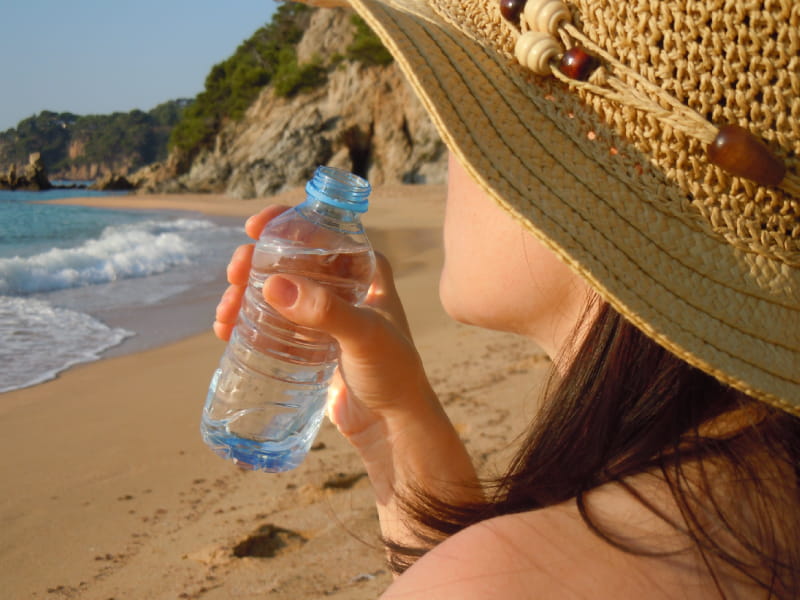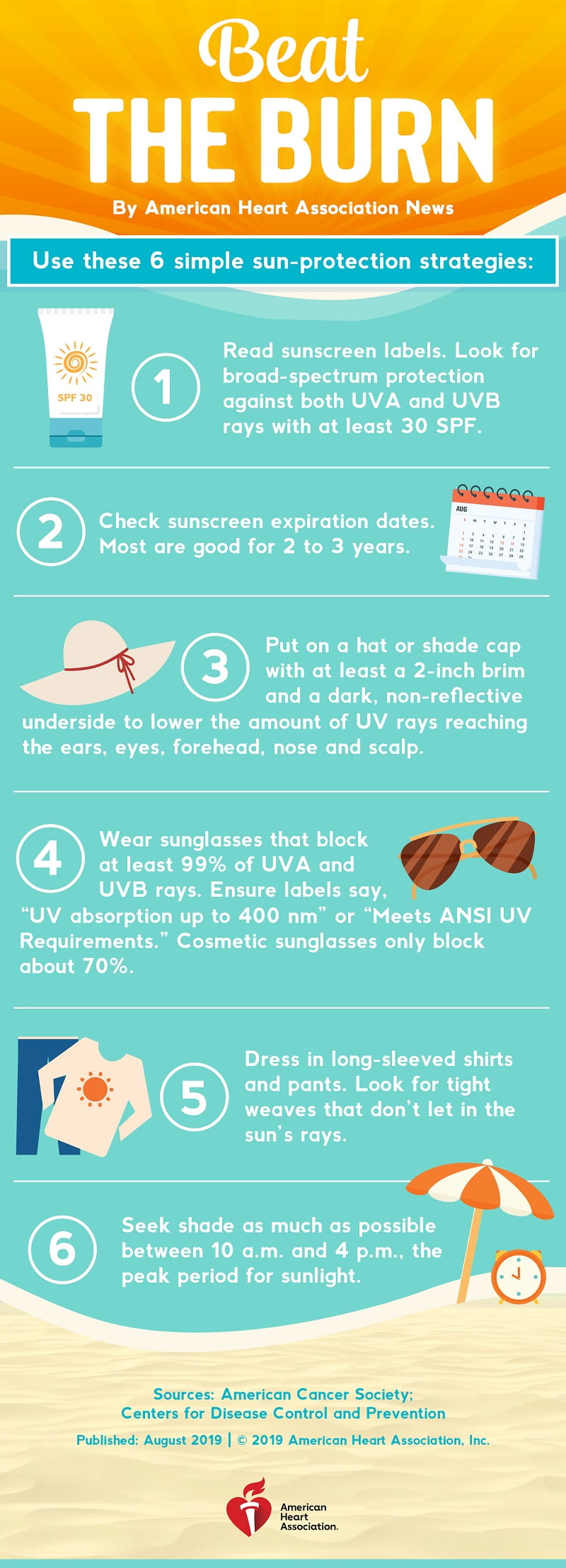5 things you need to know to stay safe and healthy this summer
By American Heart Association News

Summer is a time to have fun in the sun – but it's also the season for keeping a watch on your health.
Heat-related illness, dehydration and sun exposure are among the most common concerns as temperatures rise. To prevent a potentially dangerous situation, here are five safety guidelines and numbers to know.
Heat illness strikes thousands each year
Every year, more than 65,000 people visit an emergency room for acute heat illness, according to the federal Centers for Disease Control and Prevention. Extreme heat causes more than 600 deaths per year.
Even when it doesn't seem extreme, heat and humidity can take a toll.
"It doesn't have to be all that hot for people to experience heat-related illnesses," said Dr. Robert E. O'Connor, professor and chair of emergency medicine at the University of Virginia-Charlottesville.
On one end of the heat stress spectrum are heat cramps, often linked to warm weather and overdoing an exercise you're not accustomed to, O'Connor said. If these muscle cramps occur, take a break, drink water and find some shade or air conditioning to cool off.
Heat exhaustion, a more serious condition, may include an inability to maintain the same continuing level of physical activity, a body temperature around 100 to 102 degrees and dizziness, nausea, dehydration and rapid heart rate, O'Connor said. Try to cool down and drink water. But if symptoms worsen or vomiting occurs, get medical help.
Heat stroke is even more severe and may cause death or permanent disability. (It's not the same as a stroke that happens when a blood vessel to the brain bursts or is blocked by a clot.)
Heat stroke is characterized by a body temperature of 104 degrees that may even exceed 106 degrees, heat exhaustion symptoms, trouble walking and neurological difficulties such as slurred speech or mental confusion.
"We take that very seriously," O'Connor said, warning, "Seek medical attention."

65+ and other risk factors
Those at highest risk for heat-related illnesses include people over 65 or children under 2 and those with chronic diseases, such as heart disease. Other risk factors are obesity, poor circulation and prescription drug or alcohol use.
While heat illnesses may occur amid outdoor summer fun, it can happen year-round and among those who work in extreme heat, O'Connor said.
Emergency room medical staff can assist with "evaporative cooling," or blowing air and sprinkling water on a patient to mimic the natural cooling mechanism of perspiration, he said.
Keeping hydrated, by the numbers
Drinking one bottle of cold water for every hour in heat and high humidity helps keep you hydrated, O'Connor said.
Another gauge of fluid intake: If you're outdoors and haven't urinated in a couple of hours, drink more water, he said. Additionally, if your urine is clear, rather than darker, it's a sign that you are likely adequately hydrated.
The federal Institute of Medicine estimates that overall, men need 3.7 liters of water daily, or 15 eight-ounce glasses, and women need 2.7 liters, or 11 glasses.
Symptoms of mild dehydration are feeling thirsty or experiencing a dry or sticky mouth; dry, cool skin; headache; or muscle cramps. Severe dehydration symptoms include dry, shriveled skin; irritability or confusion; dizziness; rapid heartbeat; rapid breathing; fatigue; and unconsciousness.
Sun protection 101: Use SPF 30 or higher
A painful sunburn today can lead to skin damage and skin cancer over time.
Each year more people are diagnosed with skin cancer than all other cancers combined. One in five Americans develop skin cancer by age 70.
A sunscreen's SPF, or "sun protection factor," refers to how long it will provide protection. The higher the number, the longer it protects from the sun. Experts recommend using sunscreen at level SPF 30 SPF or higher when outdoors.
Sun intensity depends on the time of day. Rays are strongest midday, so minimize exposure from 10 a.m. to 4 p.m. Ultraviolet light can penetrate clouds, meaning sun exposure can happen on overcast days.
Keep in mind that taking certain medications may result in higher sun sensitivity, too, O'Connor said.
Swim safely, don't become a statistic
Every day, an average of 10 people of all ages die in the United States from accidental, non-boating related drowning. Drowning ranks fifth among the nation's top causes of unintentional injury death.
Swim with a friend and keep watch, especially in oceans, rivers or lakes where water isn't clear and underwater obstacles may be present. Drowning can happen quickly and silently.
"It's not always yelling for help," O'Connor said. "It's important to see someone early when they're in distress."
Consider learning CPR. The American Heart Association recommends CPR rescue breaths along with chest compressions in cases of drowning.
If you have questions or comments about this story, please email [email protected].





